Bai he – Lily root,Lily tcm,Lily herb,bai he herb,bai he lily,lily pad root,lily pad root medicine,lilyturf root,roots of lily,Lily
[Family and medicinal part] This product is the fleshy scales of lily and other plants of the lily family.
[Nature and flavor and meridians] Sweet, slightly cold. Enters the heart and lung meridians.
[Effects] Moisturizes the lungs and relieves coughs, calms the mind and soothes the nerves.
[Clinical application] 1. Used for dry lungs or coughs due to lung heat.
This product is sweet and cold, can clear the lungs and moisten dryness, and is often used in combination with Ophiopogon japonicus, Adenophora radix, Fritillaria thunbergii, Licorice, etc. for dry lungs or coughs due to lung heat.
2. Used for symptoms such as residual heat after fever and confusion.
This product has the effect of calming the mind and soothing the nerves. It is used for symptoms such as residual heat after fever and confusion, and is used in combination with Anemarrhena asphodeloides and Rehmannia glutinosa.
[Prescription name] Lily, wild lily (wash and dry for use).
[सामान्य खुराक र प्रयोग] तीन देखि पाँच qian, डिकोक्टेड र लिइएको।
[Example of prescription] Lily and Anemarrhena asphodeloides Decoction “Golden Chamber”: Lily, Anemarrhena asphodeloides. Treat lily disease.
Baihe Gujin Pill (recorded from “Yifang Jijie”): Shengdi, Shudi, Ophiopogon, Fritillaria, Lily, Angelica, Peony, Licorice, Scrophularia, Platycodon. Treats lung injury, sore throat, cough, wheezing, and bloody sputum.
[Literature Record] “Benjing”: “Evil Qi abdominal distension and heart disease, promotes urination and defecation, and replenishes the middle and replenishes qi.”
“Bielu”: “Relieves edema, distension, fullness, cold and heat, pain throughout the body, and breast and throat paralysis, and stops tears.”
“Da Ming Materia Medica”: “Calm the mind and calm the gallbladder, benefit the will and nourish the five internal organs.”
Effects of Lily
Nourishes yin and moistens the lungs, clears the heart and calms the mind.
Main Indications
1. Yin deficiency and dry cough, cough and bloody cough: This product is slightly cold, has a mild effect, can replenish lung yin, and can also clear lung heat. Although the power of moistening and clearing the lungs is not as good as that of northern Adenophora and Ophiopogon, it has a certain cough and expectorant effect.
2. Insomnia and palpitations due to Yin deficiency and heat, and lily disease with heart and lung Yin deficiency and internal heat syndrome: This product can nourish Yin and clear the heart, calm the mind and soothe the nerves.
प्रयोग र खुराक
Oral: decoction, 6-12g. Honey roasting can increase the lung moistening effect.
सावधानी
Those with wind-cold cough and loose stools due to cold should not take it.
रासायनिक संरचना
This product contains phenolic acid glyceride, propionate derivatives, phenolic acid glycosides, phenolic acid glyceride glycosides, steroidal glycosides, steroidal alkaloids, trace elements, starch, protein, fat and other ingredients.
औषधीय प्रभाव
Lily water extract has antitussive and expectorant effects on experimental animals; it can counteract toad asthma caused by histamine; lily water extract also has strengthening, sedative and anti-allergic effects; lily water decoction alcohol precipitation has hypoxia resistance; it can also prevent leukopenia caused by cyclophosphamide.
सम्बन्धित छलफल
1. “Rihuazi Bencao”: “Calm the mind, stabilize the gallbladder, benefit the will, and nourish the five internal organs.”
2. “Bencao Gangmu Shiyi”: “Clear phlegm and fire, replenish deficiency.”
क्लिनिकल आवेदन
1. Treat dry cough with little sputum, hemoptysis, or dry throat and hoarseness due to yin deficiency and lung dryness with heat, and use coltsfoot flowers, such as Baihua Gao in “Jisheng Fang”.
2. Treat chronic cough due to lung deficiency, cough and hemoptysis due to fatigue, and use it with lung-clearing and phlegm-removing drugs such as Rehmannia glutinosa, Scrophularia ningpoensis, Platycodon grandiflorum, Fritillaria cirrhosa, such as Lily Gujin Decoction (“Shenzhai Yishu”).
3. Treat virtual heat disturbance, insomnia, palpitations, and use it with Ophiopogon japonicus, Ziziphus jujuba, Salvia miltiorrhiza and other heart-clearing and tranquilizing drugs.
4. Treat lily disease with trance, uncontrolled emotions, bitter mouth, red urine, weak pulse, etc., and use it with yin-nourishing and heat-clearing products such as Rehmannia glutinosa and Anemarrhena as well.
Related compatibility
1. Lily with Fritillaria: Lily is sweet and cold, good at clearing lungs, moistening dryness and relieving cough; Fritillaria is sweet, bitter and slightly cold, good at clearing heat and resolving phlegm, moistening lungs and relieving cough. The combination of the two medicines can enhance the effects of clearing heat and moistening lungs, resolving phlegm and relieving cough. It is suitable for phlegm-heat blocking the lungs, heat burning body fluid injury, lung failure, cough and asthma, blood in sputum, etc.
2. Lily with Poria: Lily is sweet and cold, good at clearing lungs, moistening dryness and relieving cough; Poria is sweet and light, good at diuresis, infiltration and strengthening spleen. The combination of the two medicines can have the effects of clearing lungs, moistening dryness, diuresis and infiltration. It is suitable for phlegm-heat blocking the lungs, lung qi stagnation, cough and asthma, affecting the main treatment of the lungs, accompanied by edema of the waist and knees, and urinary difficulty.
3. Lily with Gypsum: Lily is good at clearing heat and moistening lungs, relieving cough and resolving phlegm; Gypsum is good at clearing lung heat, relieving cough and relieving asthma. The combination of the two medicines can enhance the effects of clearing heat, promoting lung and relieving asthma, moistening lung and relieving cough. It is suitable for those with heat evil blocking the lungs, shortness of breath and coughing, irritability and headache, and external symptoms.
4. Lily with Platycodon: Lily is good at moistening the lungs and relieving cough; Platycodon is good at relieving cough and relieving throat. The combination of the two medicines can enhance the effect of clearing the lungs and resolving phlegm, moistening the lungs and lowering qi to relieve cough. It is suitable for children with cough, phlegm in the chest, sore throat, and the main symptoms are phlegm, heat and poor breathing.
5. Lily with Coltsfoot: Lily is sweet, cold and moist, good at moistening the lungs and relieving cough, and nourishing lung yin; Coltsfoot is pungent, warm and moist, good at moistening the lungs and relieving cough and phlegm. The combination of the two medicines can enhance the effect of moistening the lungs and nourishing yin, relieving cough and resolving phlegm. It is suitable for lung heat, long-term cough and damage to yin, lung and kidney yin deficiency, fatigue cough and hemoptysis, etc.
6. Lily with Ophiopogon japonicus: Lily is sweet, cold and moist, good at moistening the lungs and relieving cough, nourishing lung yin; Ophiopogon japonicus is sweet, cold and moist, good at clearing heat, nourishing yin, moistening the lungs and relieving cough. The combination of the two medicines can enhance the effects of moistening the lungs, relieving coughs, and nourishing yin. It is suitable for lung and kidney yin deficiency, cough, hemoptysis, etc.
7. Lily with talcum powder: Lily is good at clearing the heart and calming the mind; talcum powder is good at clearing heat and diuresis. The combination of the two medicines can enhance the effects of nourishing yin and moistening the lungs, clearing the heart and relieving thirst, and clearing heat and diuresis. It is suitable for lily disease evil depression for a long time, irritability and thirst, and red and astringent urine.
8. Lily with Anemarrhena: Lily belongs to the heart meridian, has the effects of nourishing heart yin, benefiting heart qi, clearing heart heat, and calming the mind; Anemarrhena belongs to the kidney meridian, has the effects of nourishing kidney yin, moistening lung dryness, retarding bone steaming, and reducing virtual fire. The combination of the two medicines can have the effects of nourishing the heart and moistening dryness, nourishing yin and reducing fire. It is suitable for heat disease damaging yin, insufficient qi and fluid, virtual irritability and palpitations, irritability and thirst, insomnia and dreams, even trance, silence, such as cold without cold, etc.
9. Lily with egg yolk: Lily is good at clearing the heart and calming the mind, nourishing yin; egg yolk is good at nourishing the heart and eliminating troubles, and benefiting the stomach. The combination of the two medicines can nourish yin and benefit the stomach, and reduce adverse effects and eliminate troubles. It is suitable for those with lily disease evil depression for a long time, upset and thirsty, and red and astringent urine.
Identification of medication
1. Raw lily, honey lily, steamed lily: Raw lily is cold in nature, mainly for clearing the heart and calming the mind, mainly for treating residual heat after fever, restlessness and palpitations, insomnia and dreaminess, and mental confusion. Honey lily is good at moistening the lungs and relieving cough, and is mostly used for chronic cough due to lung deficiency, cough due to tuberculosis, blood in sputum, lung yin deficiency, and virtual fire inflammation. Steamed lily is slightly less cold, and it also belongs to the stomach meridian. It is good at nourishing yin and moistening the lungs, benefiting the lungs and stomach, and can treat dry cough due to lung dryness, insomnia and upset, and nausea due to stomach heat.
2. Stemona and lily: Both are sweet and enter the lungs and can moisten the lungs and relieve coughs. They are good at treating dry coughs due to lung heat and yin deficiency. Stemona tuber is bitter and neutral in nature. It is used exclusively in the lung meridian. It can treat coughs regardless of whether they are new or old, cold or hot. It is especially good at treating coughs caused by tuberculosis and whooping cough. It can also kill insects and lice, and can treat intestinal parasites such as pinworms and roundworms, as well as vaginal trichomoniasis, head lice, body lice, scabies, etc. Lily is slightly cold in nature and enters the heart meridian. It is good at nourishing yin and moistening the lungs and relieving coughs. It can treat chronic coughs caused by lung deficiency, dry coughs, and hemoptysis caused by fatigue. It can also clear the heart and calm the mind, and can treat insomnia caused by deficiency and restlessness, palpitations and restlessness.
3. Adenophora and lily: Both are sweet and slightly cold in nature. They belong to the lung meridian. They both have the function of nourishing yin and clearing the lungs. They can treat dry coughs caused by lung heat and coughs caused by yin deficiency and fatigue. Adenophora enters the stomach meridian, has a stronger lung clearing effect, and can benefit the stomach and produce fluid. It can treat insufficient stomach yin or damage to both qi and fluid. Lily enters the heart meridian, has a better lung moistening effect, and can clear the heart and calm the mind. It can treat insomnia caused by deficiency and restlessness, palpitations and restlessness.
4. Coltsfoot and lily: Both belong to the lung meridian and can moisten the lungs and relieve coughs. They can treat coughs. Coltsfoot is bitter and slightly warm, and can also resolve phlegm. It is a good product for relieving coughs and treating coughs. It can treat coughs and asthma regardless of external or internal injuries, cold or heat, deficiency or excess. It is especially suitable for lung cold coughs. It can also treat lung abscesses. Lily is sweet and slightly cold, and enters the heart meridian. It is good at nourishing yin, moistening the lungs and relieving coughs. It can treat chronic coughs due to lung deficiency, dry coughs, and coughs due to fatigue and hemoptysis. It can also clear the heart and calm the mind. It is used for insomnia due to deficiency, palpitations, and restlessness.
5. Albizzia bark and lily: Both are sweet and enter the heart meridian and have the function of calming the mind. They are good at treating insomnia due to deficiency. Albizzia bark is flat and enters the liver meridian. It can nourish the heart and calm the mind, relieve liver depression, promote blood circulation and eliminate carbuncles. It is used for emotional injuries, depression, insomnia, as well as fractures, carbuncles, and swellings. Lily is slightly cold in nature and enters the lung meridian. It can not only clear the heart and calm the mind, but also nourish yin and moisten the lungs. It is mainly used to treat insomnia caused by deficiency and restlessness in the late stage of fever and residual heat, internal injuries and miscellaneous diseases, restlessness and anxiety caused by yin deficiency and heat, as well as chronic cough, dry cough and cough due to fatigue and hemoptysis.
6. Polygonatum and lily: Both are sweet and cold products. They can clear the lungs and nourish yin, clear heat and produce fluid, and are often used together. Lily is still in the heart meridian, and has the function of clearing the heart and calming the mind. It can be used for symptoms of deficiency and restlessness, palpitations, insomnia and dreaminess. It is an essential medicine for treating lily disease; Polygonatum also belongs to the stomach meridian, and has the function of nourishing stomach yin, moistening stomach dryness, producing fluid and quenching thirst. It is often used for symptoms of yin damage caused by fever, lack of fluid, and restlessness and thirst.
सम्बन्धित औषधिहरू
Lily Gujin Pills (Oral Liquid), Chuanbei Xueli Paste, Gejie Dingchuan Capsules (Pills), Jieyu Anshen Granules.
Medicinal diet therapy
Lily and Tremella Soup:
1. Efficacy: nourishing yin and moistening lungs, clearing heat and quenching thirst, protecting trachea.
2. Raw materials: 15g lily, 5 jujubes, 20g Tremella, 1/2 cup of crystal sugar, appropriate amount of water.
3. Method: Soak the lily in warm water. Remove the seeds from the jujube and cut it into small dices for later use. Soak the Tremella in water and wash it, remove the hard stems, put it into a blender, add 2 cups of water, and crush it for about 30 seconds. Do not beat it too fine to maintain the taste. Put the crushed Tremella, crystal sugar, lily, jujube dices, and water into a pot, put it in the inner and outer pots of the electric cooker, add 1 cup of water and start steaming. It can be eaten after it is cooked.
4. Usage: Drink it at will.
Processing and preparation
फसल र प्रशोधन
Dig it in autumn, wash it, peel off the scales and leaves, blanch it in boiling water, take it out, and dry it.
प्रशोधन विधि
1. Lily: Take the original medicinal materials, remove impurities and oil petals.
2. Honey lily: Dilute the refined honey with an appropriate amount of boiling water, add the clean lily, mix well, simmer thoroughly, put it in a pot, heat it with a slow fire, stir until it is not sticky, take it out and cool it. For every 100kg of lily, use 5kg of honey.
भण्डारण विधि
Store in a dry container, seal the honey lily in a ventilated and dry place.
Identification of medicinal materials
पहिचान
Take 1g of this product powder, add 10ml of methanol, ultrasonically treat for 20 minutes, filter, and concentrate the filtrate to 1ml as the test solution. Take 1g of lily control medicinal material and prepare the control medicinal material solution in the same way. According to the thin layer chromatography method (General Rule 0502), take 10μl of each of the above two solutions and spot them on the same silica gel G thin layer plate, use the upper layer solution of petroleum ether (60-90℃)-ethyl acetate-formic acid (15:5:1) as the developing solvent, develop, take out, dry, spray with 10% phosphomolybdic acid ethanol solution, and heat until the spots are clearly colored. In the chromatogram of the test sample, spots of the same color appear at the corresponding position of the chromatogram of the control medicinal material.
औषधीय सामग्री गुण
The scale leaves are oblong, with a pointed top, a wide base, wavy, curled inward, 1.5-3cm long, 0.5-1cm wide, about 4mm thick, with 3-5 veins, some of which are not obvious. The surface is white or light yellow, smooth and translucent, hard and brittle, easy to break, flat cross section, horny, odorless, and slightly bitter.
औषधीय सामग्री गुण
1. Lily: See the “Medicinal Materials” item.
2. Honey Lily: shaped like a lily, with an old yellow surface, moist, slightly shiny, and slightly sweet.
Botanical information
बिरुवा प्रजातिहरू
Lily, Lilium, Lilium, Lilium, Liliaceae.
रूपात्मक विशेषताहरू
1. Lily: perennial herb, 70-150cm high. There are purple stripes on the stem and no hair; the bulb is spherical, about 5cm in diameter, the bulb petals are wide, without nodes, and white. Leaves are scattered, with short petioles; upper leaves are often smaller than middle leaves, with oblanceolate to obovate leaves, 7-10cm long, 2-3cm wide, acute at the apex, narrow at the base, entire, glabrous, with 3-5 veins. 1-4 flowers, trumpet-shaped, fragrant; 6 tepals, obovate, 15-20cm long, 3-4.5cm wide, mostly white, purple-brown on the back, without spots, curved at the apex but not curled, with small nipple-like protrusions on both sides of the nectary; 6 stamens, curved forward, filaments 9.58-11cm long, with soft hairs, anthers elliptical, T-shaped, pollen grains brown-red; ovary long columnar, about 3.5cm long, style 11cm long, glabrous, stigma 3-lobed. Capsule oblong, about 5cm long, about 3cm wide, with ridges. Seeds are numerous. Flowering and fruiting period is June-September.
2. Fine-leaved lily: Herbaceous, 30-60cm high. Bulb conical or oblong ovate, 2.5-4cm high, 1.8-3.5cm in diameter. Leaves linear, 3-10cm long, 1-3mm wide. 1-3 flowers, drooping, bright red or purple, tepals 3-4.5cm long, 5-7mm wide, recurved, without spots or with a few spots; anthers with red pollen. Capsule nearly spherical, 1.7-2.2cm in diameter. Flowering period June-August, fruiting period August-September.
वितरण क्षेत्र
1. Lily: Distributed in Hebei, Jiangsu, Zhejiang, Anhui, Fujian, Jiangxi, Henan, Hubei, Hunan, Guangdong, Guangxi, Sichuan, Guizhou, Yunnan, Shaanxi, Gansu and other places.
2. Fine-leaved lily: Distributed in Hebei, Shanxi, Inner Mongolia, Northeast China, Shandong, Henan, Shaanxi, Gansu, Qinghai, Ningxia and other provinces.
प्रामाणिक उत्पादन क्षेत्र
Produced in most parts of the country. It is mainly produced in Qianyang, Shaoyang, Xiangxi Miao Autonomous Prefecture in Hunan, Wuxing, Changxing, Longyou in Zhejiang, as well as Jiangsu, Shaanxi, Sichuan, Anhui, Henan and other places. The quality of Hunan products is the best, and the products in Zhejiang are the largest, mostly cultivated.
वृद्धि वातावरण
Lily: grows in grass, cracks in rocks or near villages below 900m above sea level. It is also cultivated.
वृद्धि अभ्यास
Like a warm, slightly cool and dry climate, with strong shade tolerance. Cold-resistant, the growth and development temperature is preferably 15-25 degrees. It can tolerate drought. The most taboo is extreme heat and excessive rain. It is a long-day plant, and it likes light in the early and middle stages of growth. It is suitable to choose sunny, deep, loose, fertile, and well-drained sandy soil for cultivation. Low wetlands are not suitable for planting. Avoid continuous cropping, and it is better to rotate with legumes and gramineous crops.
प्रजनन विधि
Both asexual and sexual reproduction are possible. At present, scales, small bulbs and bulbils are mainly used for reproduction in production.
खेती प्रविधि
1. Scale propagation: Dig bulbs in autumn, peel off the inner scales, select the fat ones, soak them in 1:500 benomyl or captan aqueous solution for 30 minutes, take them out, dry them in the shade, insert the base downward into the seedbed, dig them out in September of the second year, transplant them with a row spacing of 15cm×6cm, and harvest them after 2-3 years of cultivation. Seedling box breeding can also be used.
2. Bulb propagation: When harvesting, sow the small bulbs with a row spacing of 15cm×6cm, and harvest them after 2 years of cultivation.
3. Bulb propagation: Harvest bulbs in summer, mix them with wet sand and store them in a cool and ventilated place, sow them on the seedbed in August-September of the same year, dig the bulbs after the aboveground part withers in the autumn of the second year, sow them with a row spacing of 20cm×10cm, harvest them in the autumn of the third year, and cultivate the smaller ones for another year.
Disease and insect control
1. If there are viral diseases, choose disease-free bulbs for propagation, and eliminate aphids that cause infectious diseases. For damping-off disease, avoid continuous cropping, pay attention to drainage, remove diseased plants immediately, and spread lime for disinfection.
2. For insect pests such as aphids, spray 1000 times diluted 50% malathion for prevention and control.
हर्बल
Bai He – Lily Root
१TP१T १TP२Tमूल्य दायरा: १TP१T देखि १TP२T सम्म
+ नि: शुल्क ढुवानीBai he – Lily root,Lily tcm,Lily herb,bai he herb,bai he lily,lily pad root,lily pad root medicine,lilyturf root,roots of lily,Lily, a Chinese medicine name. It is the fleshy scale leaf of Lilium brownii F. E. Brown var. viridulium baker or Lilium pumilum DC. of the genus Lilium in the Liliaceae family. It has the effects of nourishing yin and moistening the lungs, clearing the heart and calming the mind. It is mainly used to treat dry cough due to yin deficiency, cough with blood due to overwork, insomnia and palpitations due to yin deficiency and heat, and lily disease syndrome of heart and lung yin deficiency and internal heat.
| वजन | 1 किलो, 10 केजी, 100 केजी |
|---|






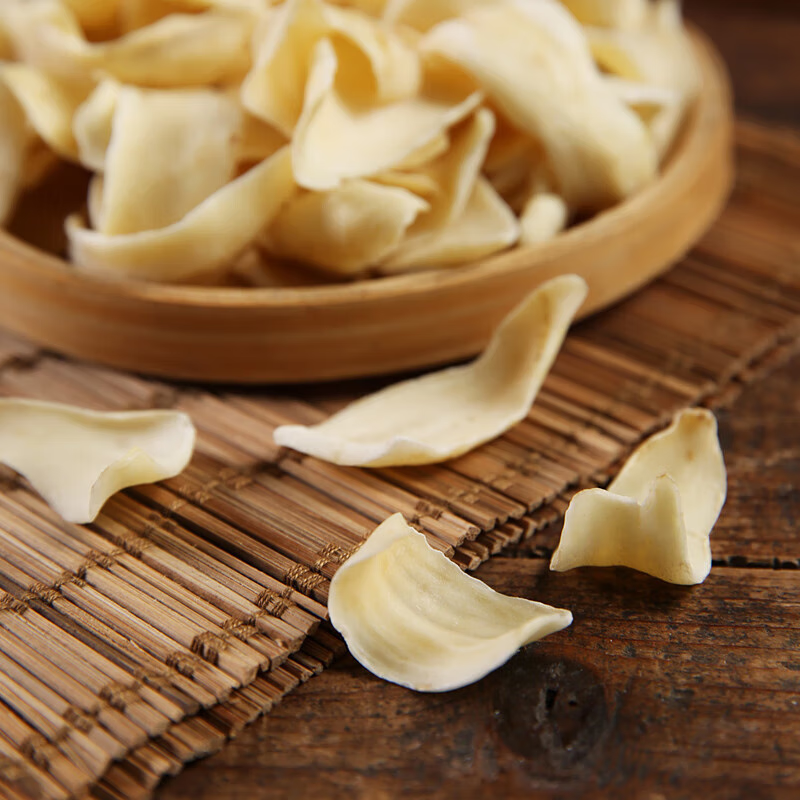
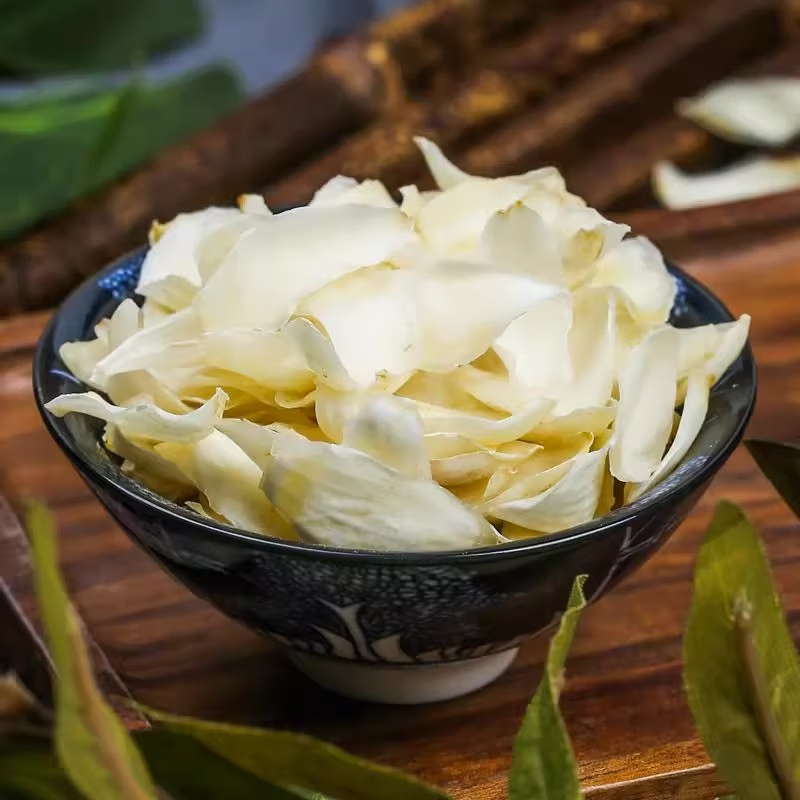
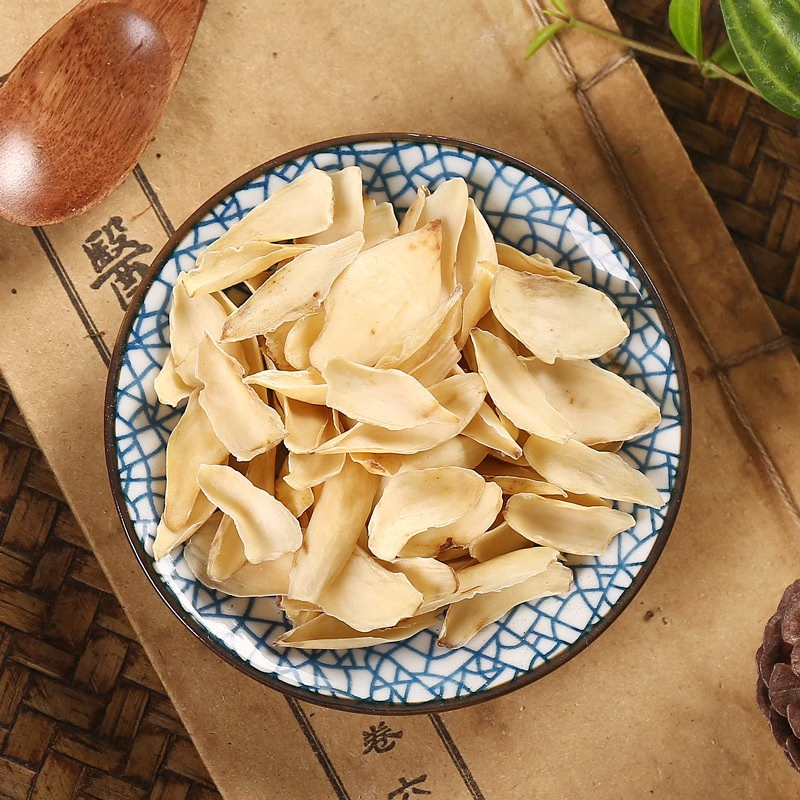
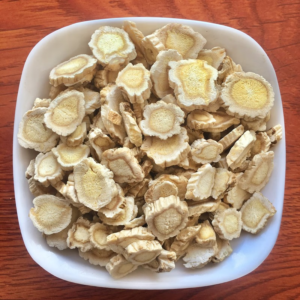
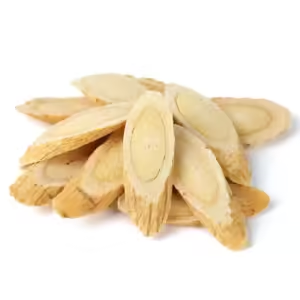
समीक्षाहरू
अहिलेसम्म कुनै समीक्षाहरू छैनन्।